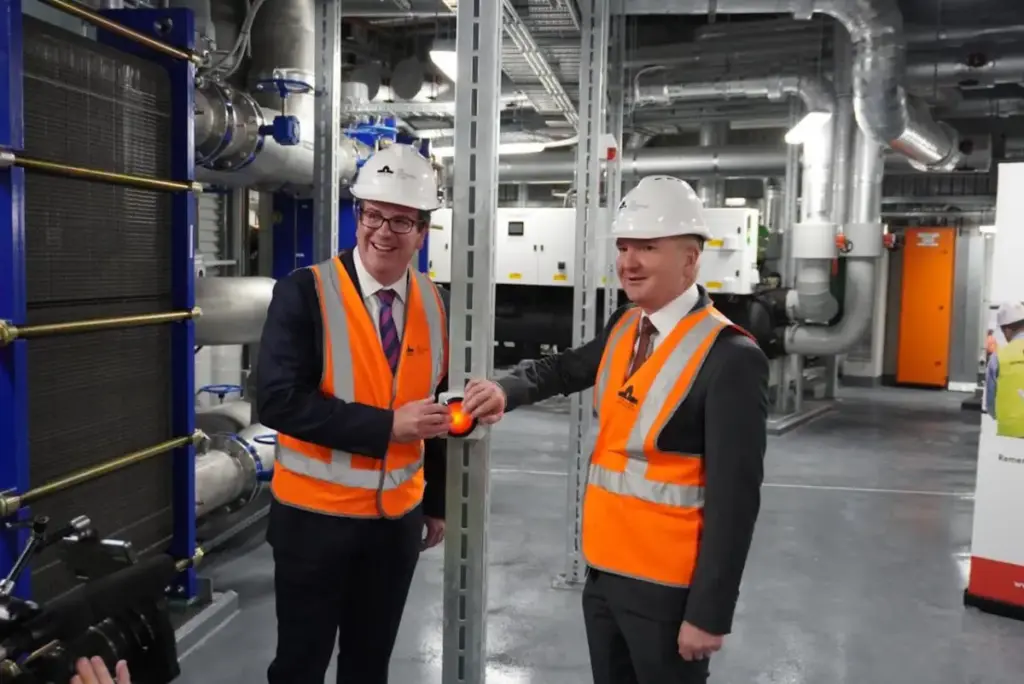
Australia, a nation often characterized by its climatic extremes, faces a recurring challenge each summer. Cities like Sydney, Perth, and Melbourne experience soaring temperatures, leading to a surge in air conditioning use and subsequent grid strain. Yet, beneath the urban landscape lies a largely untapped resource that could revolutionize how Australians heat and cool their buildings: geothermal energy.
This geothermal potential is not derived from volcanic activity or deep geothermal reservoirs but from the consistent thermal stability found just a few dozen meters underground. In most of Australia, the ground temperature ranges from 18–25°C, ideal for heat pumps used in heating and cooling. This discovery is part of a growing conversation about geothermal energy’s role in Australia’s future energy strategy, as highlighted in the 2025 report “Beyond the Hype: Geothermal in Context” by TFIE Strategy Inc.
Understanding Geothermal’s Practical Applications
The report emphasizes that the true opportunity for geothermal energy lies not in speculative high-enthalpy projects but in practical applications such as district heating and aquifer thermal energy storage (ATES). These methods leverage the steady subsurface temperatures, mature drilling techniques, and long-lasting infrastructure to provide sustainable heating solutions.
Australia boasts world-class subsurface expertise, a critical factor for expanding geothermal systems in urban settings. The country’s oil and gas industry has long mastered horizontal drilling, a skill set directly applicable to geothermal projects. However, a consistent market for subsurface thermal systems has yet to emerge.
Lessons from Europe
ATES technology, which involves storing excess heat in subsurface aquifers during summer and extracting it in winter, is already well-established in northwestern Europe. The Netherlands, for example, has over three thousand systems in operation, providing heating and cooling to various facilities. This success demonstrates that when geology, regulation, and market conditions align, aquifer-based thermal energy storage can become routine urban infrastructure.
Australia’s southern coastal cities, including Perth, Adelaide, Melbourne, and Canberra, present promising candidates for geothermal and ATES systems. Each city offers unique geological and climatic conditions that make these systems economically viable. For instance, Perth’s sandy aquifers are ideal for seasonal thermal energy storage, while Adelaide’s limestone aquifers have decades of operational data supporting their use.
Current Projects and Future Potential
Australia already has several operational examples demonstrating geothermal technology’s viability. The Fairwater housing development in Sydney uses geothermal heat pumps for climate control, while the Australian War Memorial in Canberra is installing boreholes for temperature regulation. These projects show how geothermal concepts can be successfully adapted to Australian conditions.
Data centers, significant contributors to urban heat, present another opportunity for geothermal integration. These facilities generate substantial low-grade waste heat, which could be captured for use in ATES systems. This integration could transform data centers into anchors for urban heat networks, reducing energy waste and stabilizing grid demand.
Economic and Environmental Benefits
Heating and cooling account for approximately 40% of building electricity consumption in dense urban areas like Sydney and Melbourne. Implementing geothermal or ATES systems could significantly reduce these costs, saving millions annually and reducing peak grid stress. The capital and operating costs of these systems are becoming well-understood, with building-scale systems offering substantial energy reductions and quick payback periods.
Building-scale closed-loop systems typically deliver 20–50% reductions in HVAC energy use with paybacks of 5–10 years.
Overcoming Challenges and Moving Forward
Despite the clear benefits, several barriers hinder the widespread adoption of geothermal systems in Australia. Regulatory inconsistencies, unclear ownership of subsurface rights, and a lack of national design codes pose significant challenges. However, these are governance and awareness issues rather than technical ones and can be addressed through policy changes and demonstration projects.
A credible path forward involves mandatory feasibility assessments for new developments, city-scale energy planning that includes geothermal options, and the establishment of a national code to streamline project approvals. Funding from organizations like ARENA could support the initial wave of urban demonstration systems, paving the way for broader adoption.
Geothermal energy offers a sustainable solution to Australia’s heating and cooling needs, complementing other renewable energy sources like solar and wind. By leveraging existing skills and infrastructure, Australia can harness the earth’s thermal inertia to transition towards a low-carbon economy. With the right policies and investments, the ground beneath Australian cities could become a cornerstone of the nation’s energy future.







